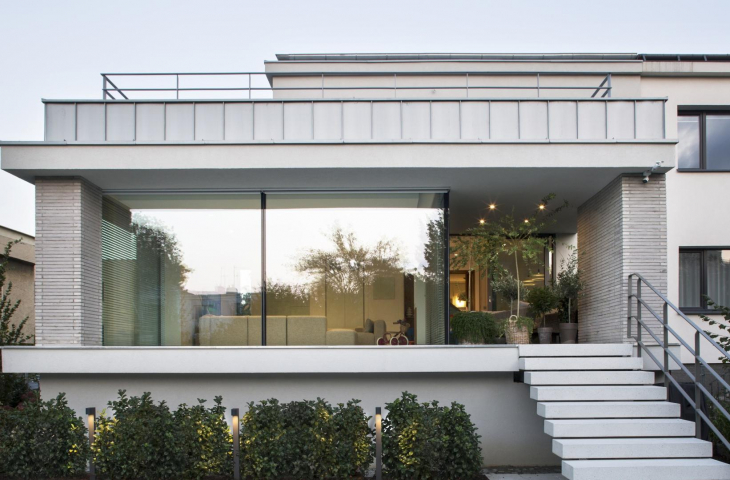The houses in the Grunwald district are a unique testimony to the modernism era. Architects from the P3 studio have been getting more commissions in this part of Poznań by word of mouth. How to create something new surrounded by modernist history.
Grunwald houses differ from each other - what they have in common, above all, is place
© Anka Gregorczyk, Photoarchitecture, P3 Architectural Studio
The villas located in the area of the Grunwald district fulfill the function of a single-family neighborhood. They allow you to adopt a house with a garden close to the city center. Some of them even date back to the 1930s.
Sebastian Nowakowski, an architect from the P3 studio, talks about what it was like to work on making changes and designing new solutions at the Grunwald Houses.
Wiktor Bochenek: How did it happen that you started so much work in this area of Poznań?
Sebastian Nowakowski: It was a complete coincidence. We did the first reconstruction on Senatorska Street, which reached subsequent clients via snail mail.
In one realization, instead of a standard road, slabs separated by greenery were used
© Anka Gregorczyk, Photoarchitecture, P3 Architectural Studio
Wiktor Bochenek: What are the "Grunwald Houses", how do they differ, and what do they have in common?
Sebastian Nowakowski: What unitesthem is their location. This is a specific part of Poznań, with a mix of houses from the 1930s and 1950s. It's a well-connected neighborhood with single-family houses, often with gardens almost in the center of the city. Each of these houses is a little different and has its own distinct history, collectively fitting into the modernism trend.
Wiktor Bochenek: Working on the Grunwald houses must have been extremely difficult - how to reconcile old material with the need for change. How do you design something in such a way that the houses don't lose their character, but are not restorative?
Sebastian Nowakowski: It's a wide spectrum of different factors. First of all, we encountered an existing matter to which we had to adapt. Second, the investor's requirements were important, and we have to do it in a way that meets his needs. These are not revolutionary remodels - we wanted these houses to fit in with the character of the street, while at the same time the shabbiness of modernity was evident. The quality of the materials used was also important.
In the Grunwald houses, the architects tried to refer to history without falling into reconstruction
© Anka Gregorczyk, Photoarchitecture, P3 Architectural Studio
Wiktor Bochenek: The urban-architectural complex of Grunwald is under conservation protection. How did this affect the design process?
Sebastian Nowakowski: In such a case, it is necessary to agree on the project with the Municipal Conservator of Monuments. The requirements are not as restrictive as they may seem - they mainly concern the facade. We tried to preserve what was valuable. On the aforementioned Senator Street, these were brick and window details, characteristic of Grunwald.
Wiktor Bochenek: What did the investors want? What were the main arguments coming through from their side?
Sebastian Nowakowski: Houses built in the 1930s or 1950s were designed functionally differently than contemporary houses. This was the biggest challenge for us. We were looking for a compromise between what we found and modern needs. In terms of architecture, they trusted us, seeing what we had done so far.
It was important to use materials that make contact with the historical fabric
© Anka Gregorczyk, Photoarchitecture, P3 Architectural Studio
Wiktor Bochenek: What caused the biggest problem, and what are you most proud of?
Sebastian Nowakowski: The biggest problem is that these are remodels that involved a lot of restrictions. We didn't want it to be a reconstruction - we wanted to create something new in this unique tissue. The greatest satisfaction comes from juxtaposing the before and after photos of the completed project. You can see both the effect and the challenge faced.
Wiktor Bochenek: Thank you for the interview.
One of the Grunwald houses
© Anka Gregorczyk, Photoarchitecture, P3 Architectural Studio




































